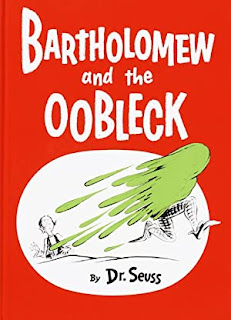 |
Fashion brands have embraced the metaverse to showcase their wares and offer their customers the chance to purchase digital versions for their avatars. Sneaker brands that appeal to young customers are a natural fit, and so Roblox now is home to both NIKELAND
and Vans World.
Even exclusive brands are able to become more accessible to potential customers by inviting them to experience their wares in digital form at a price point most could afford. Gucci did that by introducing sneaker designs that exist solely in virtual form. The Gucci Virtual 25 can be projected onto your feet via augmented reality.
The shoe always fits when it’s virtual, as you can see in this video:
The Verge reports that the shoes that could be purchased for $12.99 from Gucci’s app can also be virtually worn on an avatar in partnered apps like Roblox and VRChat. In an interview with TechCrunch, Gucci CMO Robert Triefus said that it “has been redefining its approachability as it extends its reach to digital platforms like Roblox — which the company sees as an opportunity that’s growing too quickly to ignore.”
Luxury fashion is more affordable in the metaverse
The same kind of thinking motivated Ralph Lauren to venture on to Roblox to connect with Gen Z customers. As reported in FashionUnited, at this year’s National Retail Federation’s conference, Ralph Lauren’s CEO, Patrice Louvet, said, the metaverse offers “a fantastic opportunity to interact with younger consumers, to create experiences.”
He explained, “You can get into Roblox and get your avatar to have a virtual coffee at a virtual RL coffee shop, create a virtual outfit on Zepeto or visit the Madison store virtually.”
Those virtual outfit sales already exceed 100,000 units. Items listed for sale on Zepeto are priced in ZEMs, which is the platform’s digital currency; Charged estimates that those listed price range from $0.57 to $2.86 a piece.
While a couple of hundred thousand dollars in sales doesn't make a huge different in the bottom line of a major fashion brand, it shows that the cachet is strong enough to motivate purchases for clothes that can only be worn by digital characters. And that feeling of connection to a brand will likely lead to purchases of real clothes in the real world when those customers can afford them.
( To understand NFTs, see Nearly Everything You Wanted to Know About NFTs But Were Afraid to Ask)
On January 12, Gap launched its first collection of NFTs under the name Gap Threads. The offering is designed to tap into the heightened interest in digital art and gamified experiences, which also plays on the need to act fast due to the limited availability of drops, particularly for the NFTs in the rare category.

Gap tapped Brandon Sines, the artist behind Frank Ape, for the initial collaboration.

Gap courts the digital collector with loads of FOMO.
To up the FOMO component and retain the brand identity connection, it also is dangling “the unique opportunity to own a limited edition, collectible Gap hoodie.” That’s a real hoodie you could wear, not just a digital one. But that requires earning one’s way through the more common and rare NFTs to unlock the epic category.

Gap was also riding on the popularity established by Brandon Sines, the creator of Frank Ape. “Community, creativity, and self-expression are core values in Sines’ art, which embodies positivity and equality, and aligns with Gap’s values of modern American optimism,” declared Gap.
Simplicity must not be one of those values, though. You can’t just buy what you want but have to follow the rules in place for completing a collection. Gap has to clarify some of those points on the FAQ page.
How do I complete a collection in Gap Threads?
A collection is considered complete when you collect a combination of 4 different Common NFTs and 2 different Rare NFTs from a series. Once you complete your collection, you fuse your Common & Rare NFTs to create a collector’s special NFT. Possessing a collector’s special NFT unlocks access to purchase an available limited-edition Epic NFT & IRL merch designed by artists.

The rare metallics already sold out their first day, so anyone who intends to catch one of the epic Frank Ape drops had better be poised on ready at the stroke of nine on January 19. Gap had great success with its limited-edition Yeezy offerings, and it, undoubtedly, expects to meet with similar success with its digital offerings.
The collections will likely prove to be a good short term investment, as these kinds of things do increase in value while NFTs retain the interest of an engaged fan base. Whether NFTs will retain their value over the long term is still a matter of debate. Some compare owning an NFT to naming a star -- a kind of vain ownership in two sense of the word.










